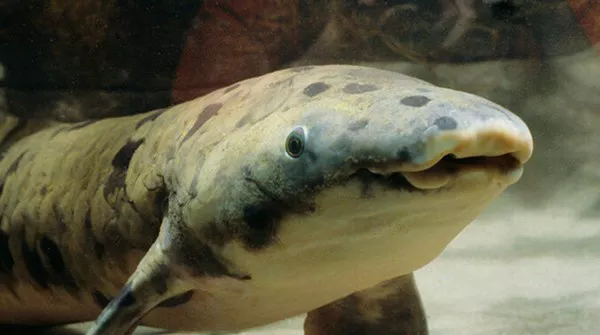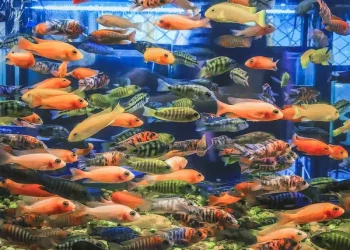Lungfish are ancient fish that have been around for over 380 million years. They are known for their unique ability to breathe air, which allows them to survive in oxygen-poor environments. But what about their teeth? Do lungfish have teeth, and if so, what are they like?
The answer is yes, lungfish do have teeth. However, their teeth are not like the teeth of most other fish. Instead of sharp, pointed teeth, lungfish have flat, plate-like teeth that are used for grinding and crushing prey. These teeth are known as “odontodes,” and they are composed of dentine and covered in enamel.
Lungfish have two sets of teeth: one set in the roof of their mouth and one set in the bottom of their mouth. These teeth are not replaced like the teeth of most other animals, but instead continue to grow throughout the lungfish’s life. As the teeth wear down from use, new teeth grow in to replace them.
The shape of lungfish teeth varies depending on the species of lungfish. For example, Australian lungfish (Neoceratodus forsteri) have teeth that are flat and triangular, while African lungfish (Protopterus spp.) have teeth that are rectangular in shape. Regardless of their shape, lungfish teeth are well-adapted for crushing and grinding prey items.
Lungfish are carnivorous, and their diet consists of a variety of prey including insects, crustaceans, and small fish. Their teeth are well-suited for grinding and crushing these prey items, making them an effective predator in their environment.
In addition to their teeth, lungfish have a number of other unique adaptations that allow them to survive in harsh environments. Their ability to breathe air through a primitive lung allows them to survive in oxygen-poor waters. They are also able to aestivate, or enter a state of suspended animation, during times of drought or other environmental stress.
Lungfish are fascinating creatures that have captured the imagination of scientists and the public alike. Their teeth are just one of the many unique features that make them so interesting. While they may not have the sharp, pointed teeth of other fish, their flat, plate-like teeth are well-suited for their carnivorous lifestyle.

























